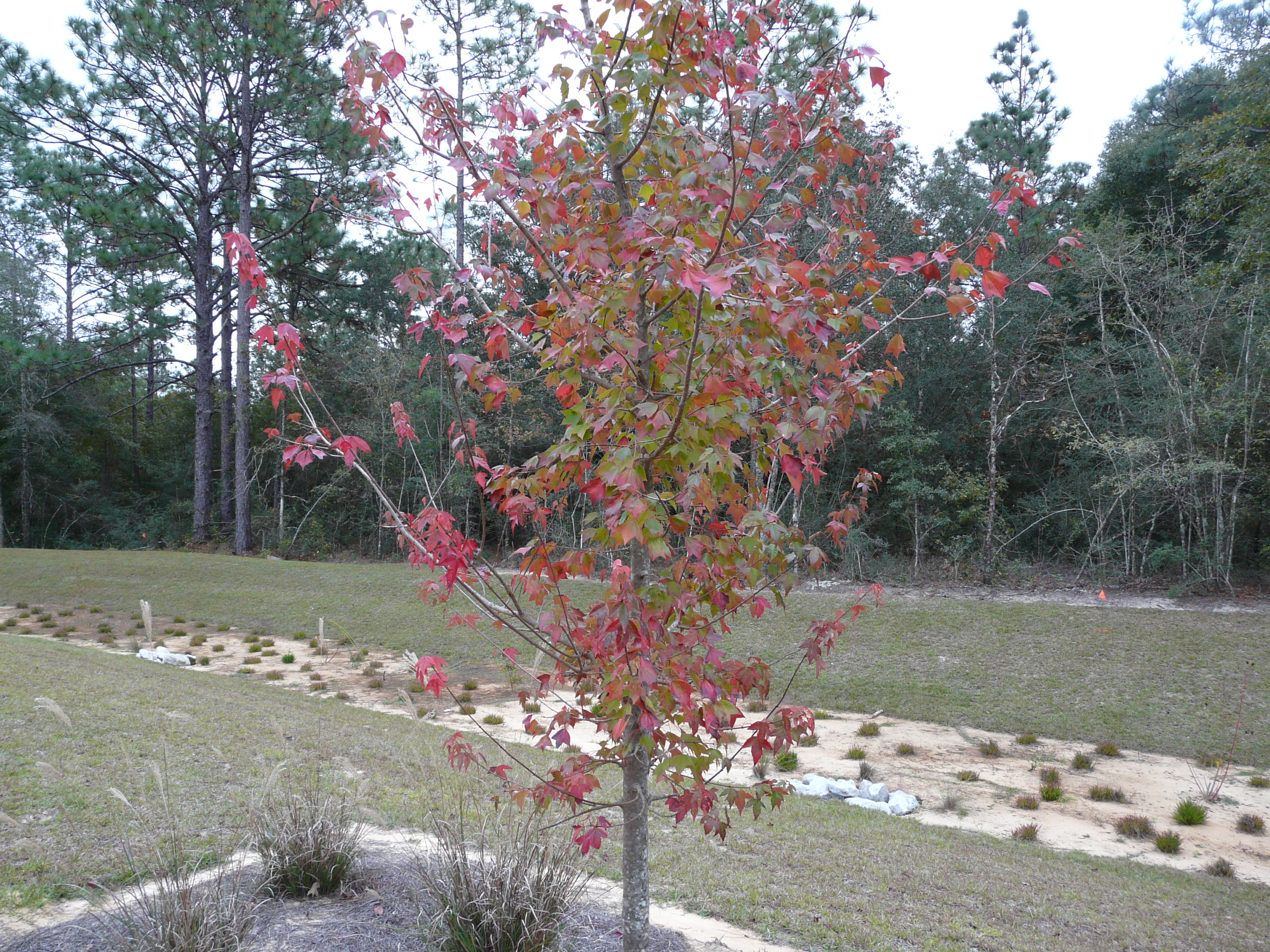
by Matt Lollar | Dec 16, 2021
Trees provide shade, aesthetics, and perspective to the landscape. However, they only serve as burdens if not properly selected and maintained. To help determine what trees do best under certain conditions and to provide information on tree care, this month’s Gardening in the Panhandle LIVE! was all about trees.
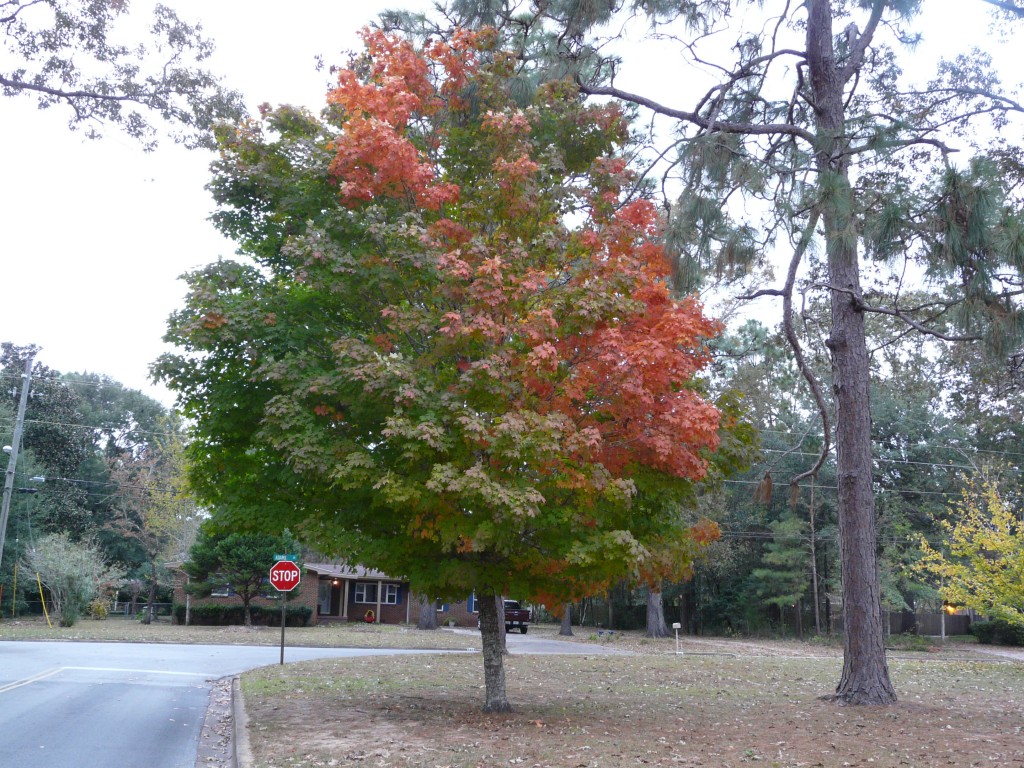
Florida maple beginning to exhibit fall color. Photo credit: Larry Williams, University of Florida/IFAS Extension – Okaloosa County
Tree Selection
Some trees grow faster than others. That’s not always a good thing, but if you’re trying to select a tree that grows fast and will provide shade in your yard then you might want to give the following species a try. Click on the links for more information.
A lot of times you’ll read a particular tree species prefers moist, well-drained soil. Some coastal soils are very well drained and require supplemental irrigation after establishment to keep some species alive. One tree that does well in sandy, well-drained soils without supplemental irrigation is the sand live oak. Another tree, that would never win a popularity contest, but does well in sandy soils is the sand pine. This tree has a gnarly growth habit, which would make it an interesting focal point in the landscape. Turkey oaks are another option for dry spots.
There are a lot of fruit tree species that can be grown successfully in the panhandle. The key to good fruit production is selecting trees that are adapted to the average number of chill hours (usually calculated by the number of hours between 34ºF and 45ºF) your yard receives on a yearly basis. Some peaches, plums, and nectarines have been developed for our climate. Citrus such as satsumas and tangerine hybrids grow well in the panhandle, but sometimes require cold protection. Persimmons, loquats, and pears are other fruit trees that grow well.
If you already have mature trees in your yard, then you may be looking for smaller, understory trees to enhance your landscape.
Living this far south, you often have to really seek out trees that change color in the fall. Dogwoods, Florida maples, and blackgum trees all have great fall color. Some of the red oaks also have nice fall color. Two that come to mind are the nuttall oak and the Shumard oak.
Trees can cause a lot of damage if planted too close to sidewalks or buildings. To determine if a tree will fit in a confined space, you will need to consider its mature trunk flare diameter.
Florida is the southern extreme for growing ginko trees. If you decide to plant a ginko tree, make sure to select a male cultivar to avoid stinky, slippery fruit.
To successfully plant a tree, you need to start with a healthy tree. If the tree you purchase was grown in a pot, make sure it isn’t rootbound and doesn’t have encircling roots. You also should inspect the tree’s form, branching structure, and look for the presence of included bark. Please read “Selecting Quality Trees from the Nursery” for more tips on what to look out for when purchasing a healthy tree.
Some trees are more tolerant than others of high winds and flooding. Please read this publication about tree failure from hurricanes to help determine what tree species are better adapted to these weather events.
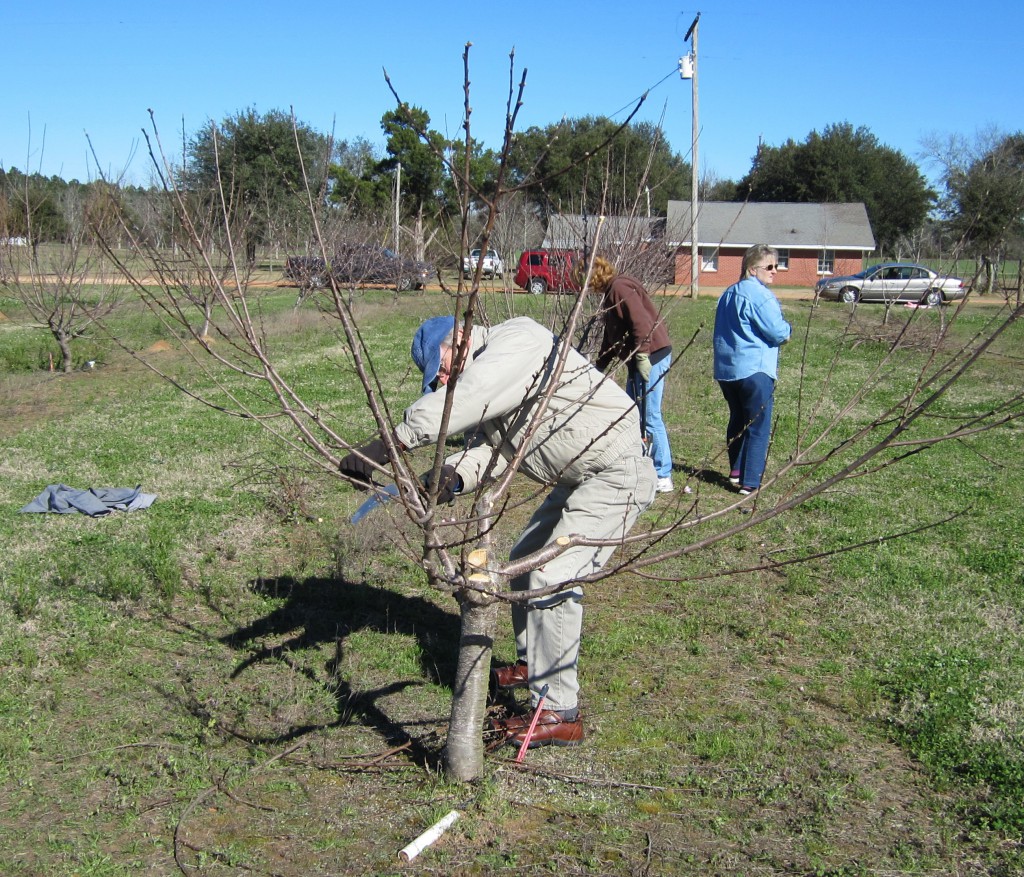
Santa Rosa County Master Gardener Pruning a Stone Fruit tree at the WFREC. Photo Credit: University of Florida/IFAS Extension
Tree Maintenance
Armillaria is a common fungal pathogen that infects trees from their roots. Other major diseases are more specific to certain species. A more comprehensive list of tree and shrub diseases can be found on the Ask IFAS website.
Tree establishment period depends on a lot of factors. Once a tree is established, it’s roots can be equal to about three times the distance from the trunk to the dripline.
Part of the beauty of a bald cypress is its knees. However they can also be a nuisance for mowing and other yard maintenance. The purpose of cypress knees is a bit of a mystery and there are a lot of theories on the subject.
Fallen leaves can help add nutrients back to your yard. Even if you are trying for a manicured lawn, you may want to rake up the leaves and use them elsewhere in the landscape.
Regardless of the species, most fruit trees benefit from a good pruning. Deciduous fruit trees should be pruned to maintain good branch structure and form, while citrus may benefit from a light hedging.
Trees are a wonderful addition to any landscape, but it’s important you select the right tree for the right place. Hopefully this article provided some information to guide you in the right direction.
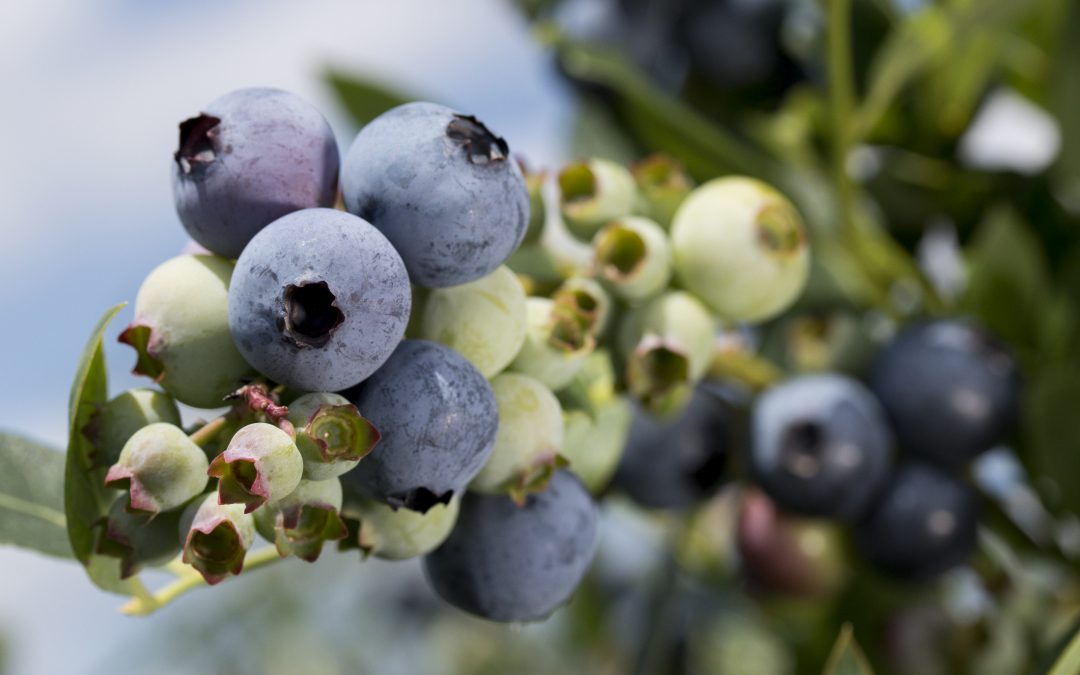
by Ray Bodrey | Jun 24, 2021
We have many choices of fruit that can be grown in the Florida Panhandle. For us hobby or dooryard growers, fruit trees can be an interesting crop to manage and most find it to be a beautiful addition to home landscapes. However, temperature and variety selection are key.
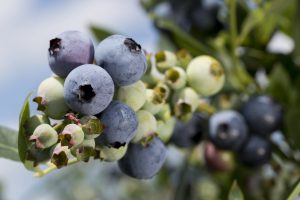
Blueberry Crop at UF/IFAS Plant Science Research & Education Unit. Photo Credit: Tyler Jones, UF/IFAS
Most fruit trees grown in the Panhandle are more temperate varieties, rather than tropical and subtropical fruits. Depending on the variety, winters in northern Florida may be too cold or may be too long for some fruit trees. Cold hardiness is a term used on fruit tree labels and reference guides. This refers to the plant’s ability to survive cooler or even freezing temperatures. In contrast, summer heat can also play a role in survivability. Some varieties are intolerant to excessive heat and humidity. The U.S. Department of Agriculture has developed a Plant Hardiness Zone Map that is helpful in selecting a variety of fruit tree: http://planthardiness.ars.usda.gov/PHZMWeb/. This is a standard by which gardeners and growers can determine which plants will thrive in their location. Northern Gulf County is in Zone 8b (15 to 20 degrees F), while coastal Gulf is in Zone 9a (20 to 25 degrees F).
Chilling requirement is another important topic when deciding on variety. Temperate zone fruit go through a “rest period” during the dormant months. For these fruit trees, a minimum length of time of cooler weather is needed for proper flowering to occur once favorable temperatures arrive. This rest period is essentially a reset. For the Panhandle, temperatures below 45 degrees F are known as chilling temperatures. The number of hours during the fall and winter that reach below this temperature equals the total chilling hours. For the Panhandle, this is rarely fewer than 500 hours. A plant that does not receive ample chilling will most likely be slow in bud and leaf development. Leaf expansion will be in increments throughout the year instead of in one period. On the other hand, colder, longer winters can cause fruit trees to end the rest stage early and begin to bud as soon as warmer temperatures arrive. This circumstance can cause cold injury later, as the Panhandle is historically known for late cold spells.
Citrus is a dooryard fruit, however it’s a subtropical fruit tree and not technically temperate. However, there are some varieties that thrive in the Panhandle. Another key to growing citrus, is to select varieties with different fruit maturity seasons. This way you can enjoy citrus year-round.
Some examples of dooryard fruit trees and varieties that are suitable for northern Florida are:
Apple: ‘TropicSweet’, ‘Anna’, ‘Dorsett Golden’
Blueberry: ‘Rabbiteye’, ‘Climax’, ‘Highbush’
Grapefruit: ‘Marsh’, ‘Ruby Red’
Lemon: ‘Myer’
Nectarine: ‘Suncoast’
Orange/Mandarin: ‘Navel’, ‘Parson Brown’, ‘Valencia’, Satsuma
Peach: ‘Gulfcrest’, ‘Gulfking’, ‘Gulfprince’
Pear: ‘Ayers’, ‘Baldwin’, ‘Kieffer’
Pecan: ‘Elliot’, ‘Stuart’, ‘Moreland’
So, where do I find information on varieties? The UF web publication “Dooryard Fruit Varieties” is a great resource. Also contact your local county extension office for more information.
Information for this article can be found in the UF/IFAS EDIS publication: “Dooryard Fruit Varieties” by J. G. Williamson, J. H. Crane, R. E. Rouse, and M. A. Olmstead: http://edis.ifas.ufl.edu/pdffiles/MG/MG24800.pdf
UF/IFAS Extension is an Equal Opportunity Institution.

by Blake Thaxton | Feb 4, 2014
February is not a month many think of as a big gardening month, although the preparation and maintenance practices performed in February can be critical to the success of an orchard for the rest of the year. Stone Fruit (Peaches, Nectarines) in particular need special care in the dormant season. During the dormant season pruning must be done to develop the best shape for the stone fruit species to bear fruit. Also, because of the disease pressures associated with stone fruit in Northwest Florida, some chemical sprays need to be added to the agenda in order to control disease and insect pests.
Pruning

Santa Rosa County Master Gardener Pruning a Stone Fruit tree at the WFREC
Peaches and Nectarines should be pruned to an open center or vase shape. This will allow a well distributed fruit set to develop and will keep the crop load at a controlled amount that can produce quality fruit. During the first year of dormancy a main scaffold (3 or 4) should be chosen to form the open vase shape structure that is desired. The desired scaffolds should be 6 inches apart vertically and sit at a 45° angle from the trunk of the tree. At the second year of dormant pruning, two to three secondary branches should be selected off of each scaffold branch. Remove all of the other secondaries off of the scaffolds and prune back the selected secondaries to 20-36 inches. The following video by the North Carolina Extension Service will give a good idea how Peaches and Plums need to be pruned.
For more information on pruning: Training and Pruning Florida Peaches, Nectarines, and Plums
Dormant Spray
This time of year trees are dormant, so action is critical to stay ahead of disease and insect pests. Peaches and Nectarines need to be sprayed with several products in order to help guard against Scale insects and Mites, Bacterial Spot, and Leaf Curl. Dormant or horticultural oils need to be applied twice 10-14 days apart for Scale and Mites. Oil efficacy is determined by coverage, as the material suffocates pests. Oil sprays need to be performed when temperatures are between 40º and 85º F. Do not apply oil after bud break. A copper based fungicide labeled for stone fruit can be sprayed at this time of year for Bacterial Spot and a sulfur based product or Chlorothalonil need to be sprayed for leaf curl control. Do not apply copper products after blooms or leaves appear. Always follow the label when spraying products on fruit trees!
For more information on Peaches and Nectarines visit UF/IFAS Electronic Data Information Source.






